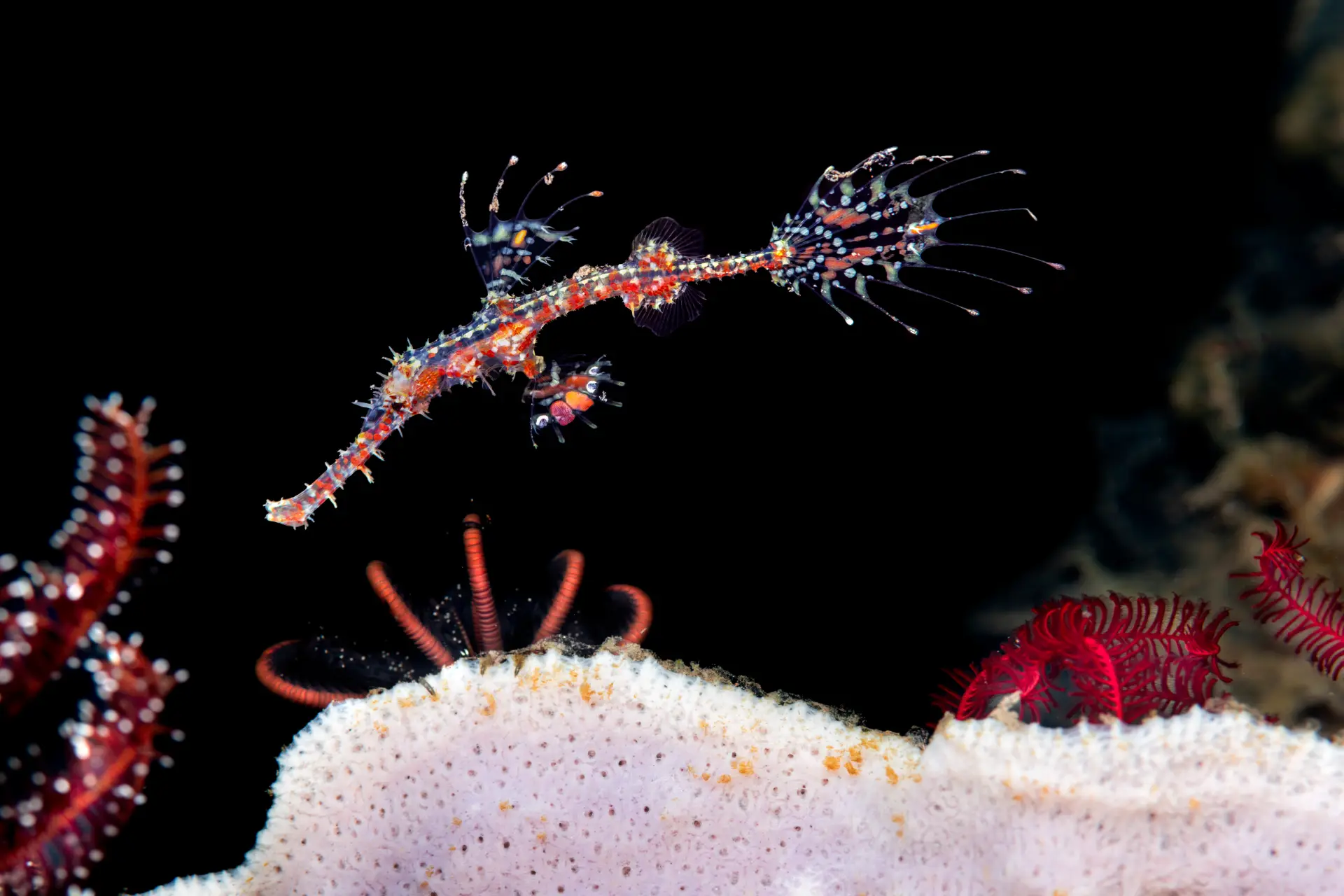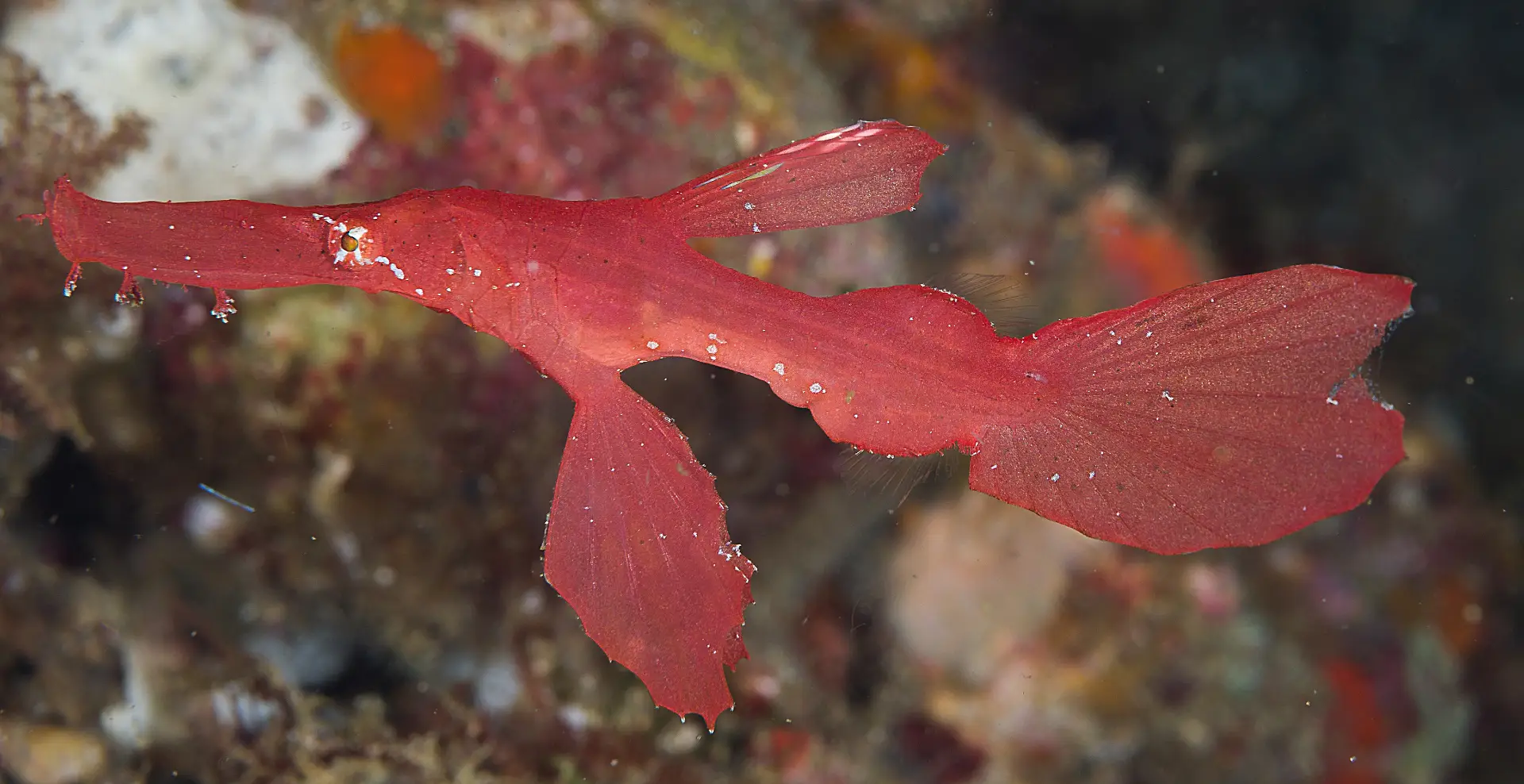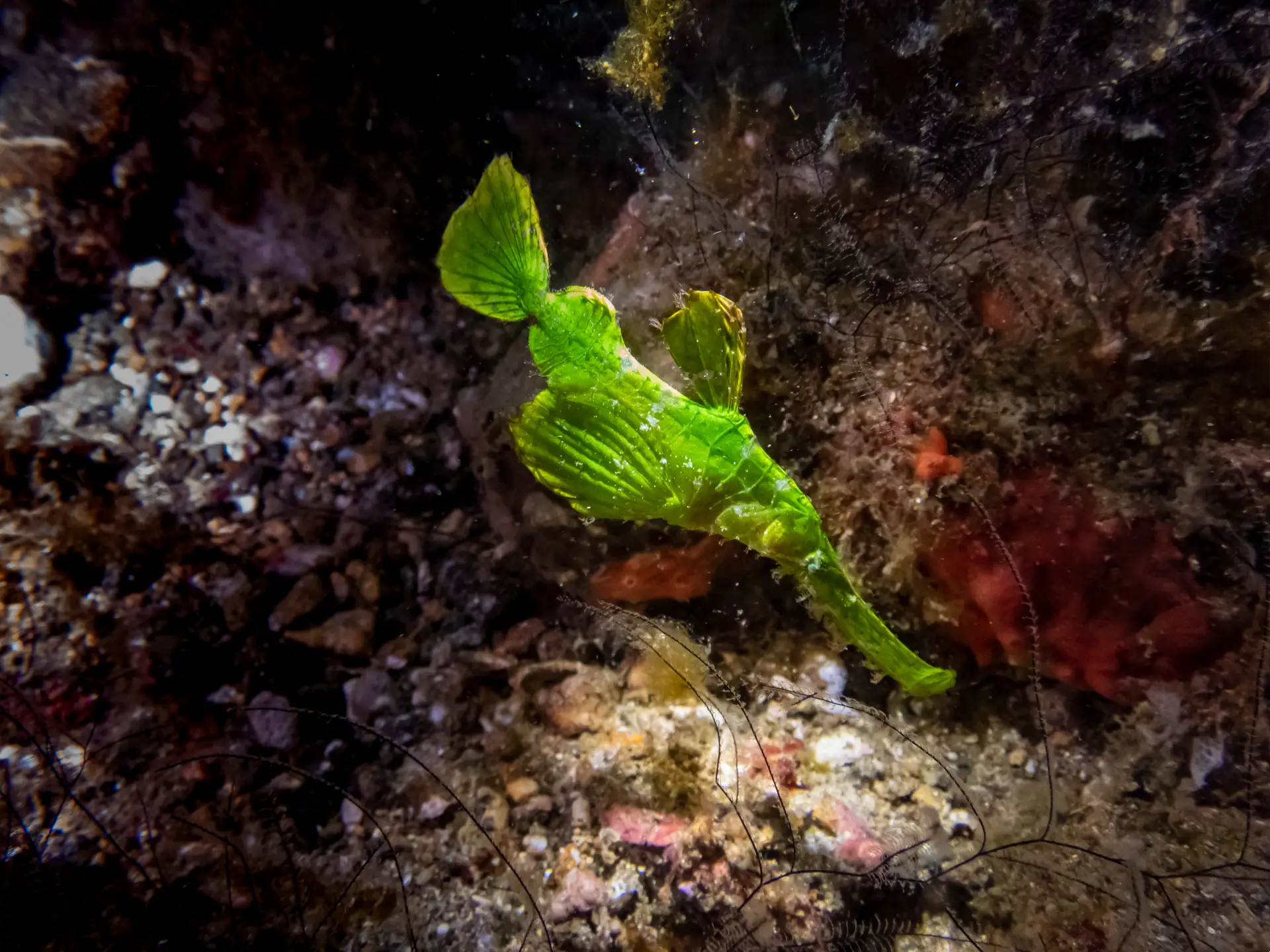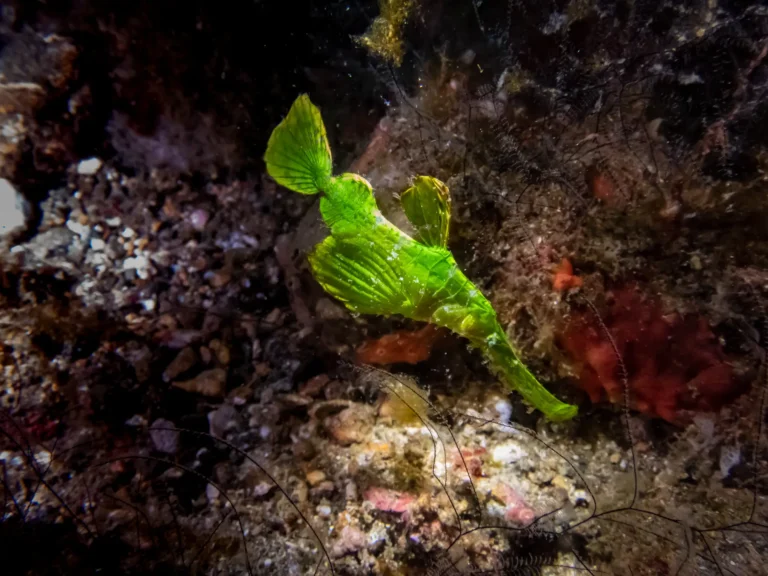Ghost Pipefish in Bohol: A Guide to Finding These Elusive Creatures
For many divers, the ocean’s greatest thrills are not always found in the grand and the majestic. While we all love the graceful sea turtles and swirling schools of jackfish, a different kind of magic captivates a certain type of diver. It’s the thrill of the hunt—the patient search for the small, the strange, and the almost impossible to find.
In this world of underwater treasure hunting, the Ghost Pipefish is a holy grail.
These creatures are living, breathing works of art; masters of disguise so perfectly adapted to their surroundings that most divers swim right past them without ever knowing they were there. Finding one is a true reward, a testament to a diver’s keen eye and a guide’s expert knowledge. Here at Sierra Madre Divers, our local guides are expert critter-spotters, and sharing the joy of a ghost pipefish discovery is one of our favourite things to do.
So, let’s pull back the curtain of camouflage and dive into the secret world of Bohol’s most enchanting illusionists.
The Ultimate Illusionist: What Exactly is a Ghost Pipefish?
First, a fascinating piece of biology: ghost pipefish are not actually “true” pipefish. While they are related to pipefish and their famous cousins, the seahorses, they belong to their own unique family, Solenostomidae. They share the characteristic long snout and fused jaw, but they have larger fins and a few habits that are all their own.
Their entire existence is built around the art of “crypsis”—the ability to avoid detection by blending seamlessly into the background. They do this by mimicking specific objects in their habitat, often floating motionlessly, head-down, waiting for unsuspecting tiny crustaceans (their prey) to drift by.
Perhaps most uniquely, their reproductive roles are a fascinating twist on their seahorse relatives. While male seahorses famously carry the young, with ghost pipefish it is the female who broods the eggs. She has modified pelvic fins that form a special pouch, into which the male fertilizes the eggs. She will carry and protect this precious brood until the fully formed young hatch and drift away to begin their own lives.
A Guide to the Ghosts of Bohol: Common Species to Look For
The waters of Bohol are a fantastic place to search for several different species of these cryptic beauties. Here are a few you might encounter:

1. The Ornate Ghost Pipefish (Solenostomus paradoxus) This is the “rock star” of the ghost pipefish world and the species most divers dream of seeing. With its flamboyant, intricate fins and delicate, almost see-through body, the Ornate Ghost Pipefish is a photographer’s dream. They are masters of mimicking their hosts, typically anchoring themselves near crinoids (feather stars) or branching gorgonian sea fans. Their colour can vary dramatically to match their chosen home, from ghostly white and vibrant yellow to deep red or jet black.

2. The Robust Ghost Pipefish (Solenostomus cyanopterus) Where the Ornate is frilly and delicate, the Robust is a master of subtlety. This species perfectly mimics a piece of decaying seagrass or a dead leaf fragment. They are often found in sandy or silty areas near seagrass beds, floating almost invisibly in the gentle surge. Spotting one requires looking for something that seems just a little too perfectly leaf-shaped.

3. The Halimeda Ghost Pipefish (Solenostomus halimeda) This species is perhaps the most impressive example of specialized camouflage in the entire ocean. It has evolved to live exclusively among Halimeda algae, a type of green macroalgae that looks like a string of small, flat, green coins. The Halimeda Ghost Pipefish has adapted to perfectly match the colour, shape, and even the mottled texture of the algae. Finding one is an incredible challenge, as you are literally looking for a fish that is pretending to be one specific leaf on one specific plant.
The Hunt: How and Where to Spot Them in Bohol
Finding a ghost pipefish is not about luck; it’s about strategy and patience.
Tip #1: Go Slow. Then Go Slower. You will never find a ghost pipefish by swimming quickly across a reef. The key is to slow everything down. Cover less ground, but see more. Move at a snail’s pace, letting your eyes patiently scan every detail.
Tip #2: Know Your Hosts. Look for the Home, Not the Fish. This is the single most important piece of advice. Don’t scan the blue for a fish; scan the environment for its likely hiding place. Meticulously and respectfully examine every feather star you see—look deep inside the fronds for the slender body of an Ornate. When you swim over a patch of seagrass or Halimeda algae, pause and look for a “leaf” that isn’t behaving quite like the others.
Tip #3: Trust Your Guide. This is a Team Sport. The honest truth is that finding these creatures requires a highly trained eye. Our local divemasters at Sierra Madre Divers have spent thousands of hours exploring these specific reefs. They know which feather star is likely to have a resident, and they can spot the subtle flicker of movement that gives a ghost pipefish away. Putting your trust in your guide is the best way to turn a hopeful search into a successful find. Let them lead the treasure hunt!
Where to Look: While these creatures can technically be found anywhere, the best hunting grounds are often on our “muck diving” sites—the sandy, silty slopes with patches of rubble and seagrass. The dive sites around Anda and certain areas of Panglao are prime locations for this kind of patient, rewarding critter hunt.
A Note on Responsible Viewing
When the magical moment happens and your guide points out a ghost pipefish, it’s crucial to be a responsible observer.
- Maintain perfect buoyancy to avoid kicking up silt, which can stress the animal and ruin the view for others.
- Never touch the ghost pipefish or the host it is living on (e.g., the crinoid).
- Be patient and give everyone in the group a chance to see and take a photo.
- Limit your use of strobes or video lights to minimize disturbance.
Finding a ghost pipefish is a gift from the ocean, a fleeting glimpse into the art of survival and illusion. It’s a moment that reminds us of the incredible, complex biodiversity hiding in plain sight on the reefs of Bohol, waiting for the patient diver to discover it.
Are you ready to join the ultimate underwater treasure hunt? Let our expert critter-spotters at Sierra Madre Divers guide you on a search for one of Bohol’s most enchanting secrets.







